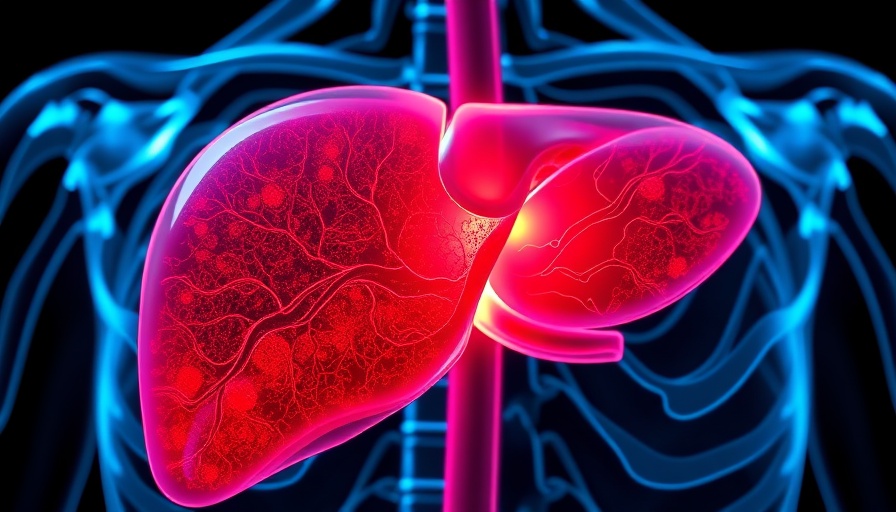
Groundbreaking Advances in MASH Treatment with Dapagliflozin
Metabolic dysfunction-associated steatohepatitis, commonly known as MASH, affects a significant portion of the population, especially those battling obesity or diabetes. Recent clinical research highlights the compelling effects of dapagliflozin, a drug primarily used for managing type 2 diabetes, and its promising role in treating MASH.
What the Study Revealed: Key Findings
A randomized trial conducted in China revealed that 53% of participants treated with dapagliflozin experienced improvements in MASH without aggravating fibrosis—compared to only 30% who received a placebo. Key metrics showed marked differences, with resolution rates of MASH (as defined by specific histological scores) standing at 23% for those on dapagliflozin versus 8% for those on placebo. In terms of fibrosis improvement, dapagliflozin outperformed placebo with 45% of patients showing significant advancement compared to just 20% on placebo.
Why Dapagliflozin Stands Out
Historically, therapeutic options for MASH have been limited, underscoring the importance of a new treatment paradigm. Currently, the only FDA-approved drug for MASH is resmetirom. However, dapagliflozin's dual action—improving metabolic control while aiding in liver health—offers new hope for comprehensive disease management.
Broader Context: Comparing Therapeutic Options
When contrasting dapagliflozin with other options like GLP-1 receptor agonist semaglutide, it’s notable that semaglutide reported a 29% improvement in MASH resolution—yet dapagliflozin showed a better performance in fibrosis improvement metrics. As such, there is an emergent need to tailor treatment options based on individual patient profiles, combining the strengths of multiple therapeutic agents to achieve optimal results.
Future Perspectives in MASH Management
Experts are excited about the future of MASH treatment, particularly as more drugs are expected to emerge. This advance could lead to more personalized therapeutic decisions, which are critical given the intertwined nature of MASLD, type 2 diabetes, and obesity. The findings surrounding dapagliflozin serve as a stepping stone towards enhancing outcomes for these patients, integrating metabolic and liver disease management into a cohesive model.
Embracing Change: Implications for Healthcare Providers
For healthcare providers, staying ahead of the curve regarding emerging treatments is crucial. The compelling data surrounding dapagliflozin emphasizes the need to adopt an evidence-based lens while considering new therapeutic options for MASH management. As clinical trials expand and deepen, continuing medical education (CME) resources will be essential to keep providers informed about these changes.
Conclusion: Taking Action in MASH Treatment
In summary, the study findings about dapagliflozin's role in managing MASH present an exciting opportunity for both healthcare providers and patients alike. It is critical for health professionals to remain engaged with ongoing research and practice updates to deliver the best possible care. As promising new treatments become available, let's work together to enhance our strategies in managing MASH effectively and compassionately.
 Add Row
Add Row  Add
Add 




 Add Row
Add Row  Add
Add 

Write A Comment